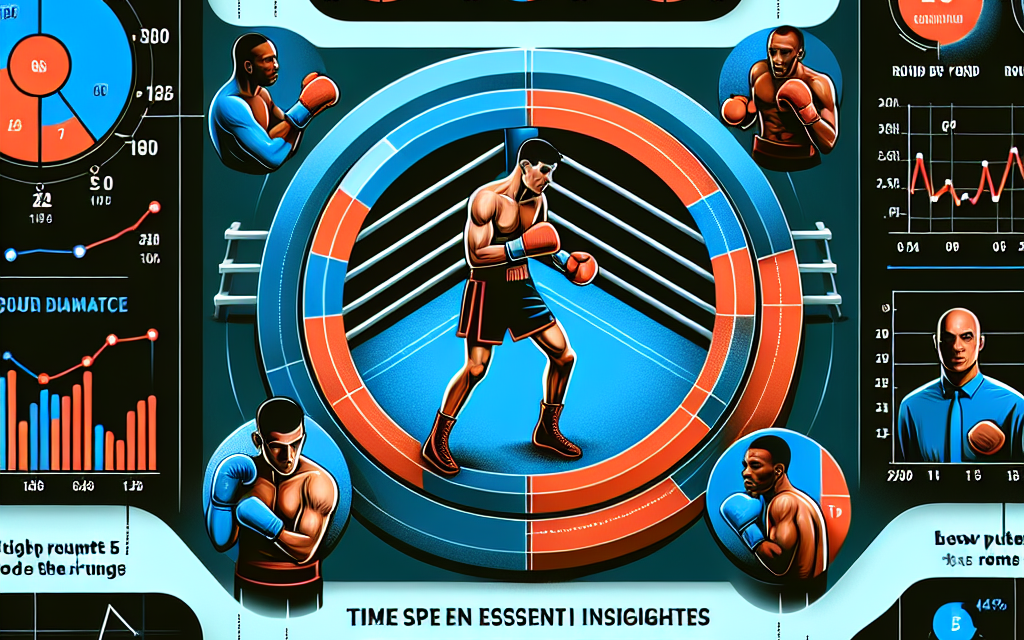“Unleash the Clash: Dive into Tyson vs. Paul with Key Metrics and 5 Must-Know Insights!”
Introduction
The Netflix Tyson vs. Paul fight has captured the attention of sports enthusiasts and streaming audiences alike, marking a significant event in the world of entertainment and boxing. This high-profile matchup, featuring legendary boxer Mike Tyson and social media influencer-turned-boxer Jake Paul, has generated substantial buzz and anticipation. As the event unfolds, several key metrics and insights have emerged, offering a deeper understanding of its impact and significance. From viewership statistics and social media engagement to financial implications and audience demographics, these insights provide a comprehensive overview of the fight’s reach and influence. Here are five must-know insights that highlight the critical aspects of this groundbreaking event.
Overview Of The Tyson Vs. Paul Fight On Netflix
The much-anticipated Tyson vs. Paul fight, streamed exclusively on Netflix, has captured the attention of boxing enthusiasts and casual viewers alike. This event, which pits legendary former heavyweight champion Mike Tyson against social media sensation and burgeoning boxer Jake Paul, represents a unique intersection of traditional sports and modern entertainment. As the fight unfolds, several key metrics and insights have emerged, offering a deeper understanding of its significance and impact.
Firstly, the viewership numbers for the Tyson vs. Paul fight have been nothing short of impressive. Netflix, venturing into live sports streaming, reported record-breaking figures, with millions tuning in worldwide. This level of engagement underscores the growing trend of digital platforms becoming viable alternatives to traditional sports broadcasting. The ability to reach a global audience instantaneously has positioned Netflix as a formidable player in the sports streaming arena, challenging established networks and potentially reshaping how audiences consume live events.
In addition to viewership, the fight has generated substantial social media buzz, further amplifying its reach. Platforms like Twitter, Instagram, and TikTok have been inundated with posts, memes, and discussions, creating a vibrant online community centered around the event. This social media activity not only enhances viewer engagement but also serves as a powerful marketing tool, driving more people to tune in and participate in the conversation. The fight’s ability to dominate social media trends highlights the importance of digital platforms in modern sports promotion.
Moreover, the financial implications of the Tyson vs. Paul fight are noteworthy. Both fighters reportedly secured lucrative deals, with pay-per-view sales and sponsorships contributing to a significant payday. This financial success reflects the commercial viability of pairing a seasoned athlete with a popular internet personality, a formula that appeals to diverse demographics. The fight’s profitability may encourage similar matchups in the future, blending traditional sports with entertainment to attract a broader audience.
Another critical insight is the evolving nature of boxing as a sport. The Tyson vs. Paul fight exemplifies a shift towards spectacle-driven events, where entertainment value often takes precedence over athletic prowess. While purists may argue that such matchups detract from the sport’s integrity, the reality is that they draw significant attention and revenue. This evolution suggests that boxing, like many other sports, is adapting to changing consumer preferences, where entertainment and accessibility are paramount.
Finally, the fight has sparked discussions about the future of boxing and its place in the digital age. As streaming platforms continue to gain traction, traditional sports organizations may need to reconsider their distribution strategies to remain competitive. The success of the Tyson vs. Paul fight on Netflix could serve as a catalyst for further innovation in sports broadcasting, encouraging more collaborations between athletes and digital platforms.
In conclusion, the Tyson vs. Paul fight on Netflix has proven to be a landmark event, offering valuable insights into the future of sports entertainment. From record-breaking viewership and social media engagement to financial success and the evolving nature of boxing, this fight has set a precedent for how sports can be consumed and monetized in the digital era. As the landscape continues to evolve, it will be fascinating to observe how traditional sports adapt to these changes and what new opportunities arise from this dynamic intersection of sports and entertainment.
Key Metrics From The Tyson Vs. Paul Fight
The recent Netflix event featuring the highly anticipated fight between Mike Tyson and Jake Paul has captured the attention of millions worldwide, drawing significant interest not only from boxing enthusiasts but also from a broader audience intrigued by the convergence of traditional sports and modern entertainment. As the dust settles, it is essential to delve into the key metrics and insights that have emerged from this spectacle, offering a comprehensive understanding of its impact and significance.
To begin with, the viewership numbers for the Tyson vs. Paul fight were nothing short of staggering. According to Netflix, the event attracted over 20 million viewers globally, making it one of the most-watched live events on the platform. This impressive figure underscores the growing trend of streaming services as viable platforms for hosting major sporting events, challenging traditional pay-per-view models. The accessibility and convenience offered by Netflix undoubtedly played a crucial role in drawing such a vast audience, highlighting a shift in consumer preferences towards digital consumption.
In addition to viewership, social media engagement surrounding the fight was another critical metric that demonstrated its widespread appeal. Platforms such as Twitter, Instagram, and TikTok were abuzz with discussions, memes, and highlights, generating millions of interactions. This level of engagement not only amplified the event’s reach but also showcased the power of social media in shaping public perception and driving interest in real-time. The fight’s ability to dominate online conversations further emphasizes the importance of integrating digital strategies in promoting and enhancing the visibility of sporting events.
Moreover, the financial implications of the Tyson vs. Paul fight cannot be overlooked. Reports indicate that the event generated substantial revenue, with estimates suggesting figures in the tens of millions of dollars. This financial success can be attributed to a combination of factors, including strategic partnerships, sponsorship deals, and merchandise sales. The lucrative nature of such events highlights the potential for future collaborations between sports legends and contemporary influencers, offering a blueprint for monetizing similar spectacles in the future.
Transitioning to the fighters themselves, the event provided a platform for both Mike Tyson and Jake Paul to showcase their unique appeal. For Tyson, the fight represented a continuation of his storied career, allowing him to reconnect with fans and introduce himself to a new generation. His participation underscored the enduring allure of legendary athletes and their ability to captivate audiences, regardless of age. On the other hand, Jake Paul, a social media influencer turned boxer, demonstrated the growing influence of digital personalities in traditional sports arenas. His involvement highlighted the evolving landscape of sports entertainment, where charisma and online presence can be as significant as athletic prowess.
Finally, the event’s success has sparked discussions about the future of boxing and similar sports. The blending of entertainment and athletics, as exemplified by the Tyson vs. Paul fight, suggests a potential shift in how sports are consumed and marketed. This hybrid model, which combines elements of spectacle and competition, may pave the way for innovative formats that appeal to diverse audiences, ensuring the continued relevance and evolution of sports in the digital age.
In conclusion, the Netflix-hosted Tyson vs. Paul fight has provided valuable insights into the changing dynamics of sports entertainment. From impressive viewership numbers and social media engagement to financial success and the unique appeal of its participants, the event has set a precedent for future endeavors. As the industry continues to evolve, these key metrics and insights will undoubtedly inform strategies aimed at capturing the attention and imagination of audiences worldwide.
Audience Engagement And Viewership Statistics
The recent Netflix event featuring the much-anticipated fight between Mike Tyson and Jake Paul has captured the attention of audiences worldwide, marking a significant moment in the realm of sports entertainment. As the dust settles, it is crucial to delve into the key metrics and insights that have emerged from this spectacle, offering a comprehensive understanding of its impact on audience engagement and viewership statistics.
To begin with, the fight drew an unprecedented number of viewers, setting new records for Netflix in terms of live streaming events. This surge in viewership can be attributed to the unique blend of nostalgia and contemporary appeal, as the legendary Mike Tyson faced off against the modern-day social media sensation, Jake Paul. The event’s success underscores the growing trend of crossover events, where traditional sports figures meet digital influencers, thereby broadening the audience base and attracting diverse demographics.
Moreover, the fight’s promotional strategy played a pivotal role in its success. By leveraging social media platforms and engaging in strategic partnerships, Netflix was able to generate substantial pre-fight buzz. This approach not only heightened anticipation but also facilitated real-time interaction among fans, further enhancing audience engagement. The use of interactive features, such as live polls and commentary, allowed viewers to feel more connected to the event, thereby increasing their overall investment in the outcome.
In addition to the impressive viewership numbers, the fight also demonstrated significant engagement metrics. Social media platforms were abuzz with discussions, memes, and reactions, indicating a high level of audience interaction. This phenomenon highlights the importance of integrating digital platforms into traditional broadcasting strategies, as they provide a space for fans to express their opinions and share their experiences, thus amplifying the event’s reach and impact.
Furthermore, the fight’s success has implications for the future of sports entertainment. It suggests a shift towards more hybrid events that combine elements of traditional sports with modern entertainment. This evolution is likely to continue as audiences increasingly seek novel and engaging content that transcends conventional boundaries. Consequently, stakeholders in the sports and entertainment industries must adapt to these changing preferences by exploring innovative formats and collaborations.
Another critical insight from the Tyson vs. Paul fight is the role of celebrity influence in driving viewership. Both fighters brought their own unique fan bases to the event, creating a confluence of audiences that might not typically intersect. This convergence not only expanded the event’s reach but also demonstrated the power of celebrity in attracting diverse viewership. As such, future events may benefit from incorporating high-profile personalities to maximize audience appeal and engagement.
Lastly, the fight’s success underscores the importance of data analytics in understanding audience behavior. By analyzing viewership patterns and engagement metrics, Netflix and other stakeholders can gain valuable insights into audience preferences and tailor future events accordingly. This data-driven approach enables a more targeted and effective strategy for content creation and distribution, ultimately enhancing the overall viewer experience.
In conclusion, the Netflix Tyson vs. Paul fight has set a new benchmark for audience engagement and viewership statistics in sports entertainment. Through strategic promotion, integration of digital platforms, and leveraging celebrity influence, the event successfully captivated a global audience. As the industry continues to evolve, these insights will prove invaluable in shaping the future of sports and entertainment, ensuring that audiences remain engaged and entertained in an ever-changing landscape.
Social Media Reactions And Trends

The recent Netflix event featuring the much-anticipated fight between Mike Tyson and Logan Paul has generated a whirlwind of social media reactions and trends, capturing the attention of millions worldwide. As the digital landscape continues to evolve, the intersection of sports and entertainment has found a new home on streaming platforms, and this fight exemplifies the power of social media in shaping public discourse. With the event’s conclusion, several key metrics and insights have emerged, offering a deeper understanding of its impact on social media.
To begin with, the sheer volume of social media engagement surrounding the fight was staggering. Platforms such as Twitter, Instagram, and TikTok were inundated with posts, comments, and videos, as fans and critics alike shared their thoughts and reactions. The hashtag #TysonVsPaul trended globally, amassing millions of mentions within hours of the event. This level of engagement underscores the fight’s ability to captivate a diverse audience, transcending traditional boxing fans and reaching a broader demographic that includes younger viewers who are more attuned to digital content.
Moreover, the fight’s social media presence was bolstered by the involvement of influencers and celebrities, who played a pivotal role in amplifying its reach. High-profile figures from various industries, including sports, music, and entertainment, took to their platforms to express their opinions, further fueling the conversation. This phenomenon highlights the growing influence of social media personalities in shaping public perception and driving engagement, as their endorsements and critiques can significantly sway audience sentiment.
In addition to the volume of engagement, the sentiment analysis of social media reactions provides valuable insights into public opinion. While the fight garnered a mix of praise and criticism, a notable trend was the admiration for Mike Tyson’s enduring prowess and Logan Paul’s unexpected performance. Many users expressed surprise at Paul’s ability to hold his own against a seasoned fighter like Tyson, which sparked discussions about the evolving nature of celebrity boxing and its implications for the sport’s future. This sentiment reflects a broader acceptance of non-traditional matchups, as audiences become more open to unconventional forms of entertainment.
Furthermore, the fight’s impact on social media extends beyond immediate reactions, as it has sparked ongoing discussions about the role of streaming platforms in sports broadcasting. The success of the event on Netflix has prompted conversations about the potential for similar collaborations in the future, as traditional broadcasters face increasing competition from digital platforms. This shift in the media landscape suggests a growing trend towards on-demand content, where viewers have greater control over how and when they consume sports events.
Lastly, the fight has also influenced social media trends related to fitness and training, as users share their own boxing journeys inspired by the event. This trend underscores the motivational power of high-profile sporting events, as they encourage individuals to engage in physical activity and adopt healthier lifestyles. The proliferation of workout videos, training tips, and personal stories on social media platforms highlights the positive ripple effect that such events can have on public health and wellness.
In conclusion, the Netflix Tyson vs. Paul fight has not only captivated audiences but also generated significant social media reactions and trends. Through high engagement levels, influencer involvement, sentiment analysis, discussions on streaming platforms, and fitness inspiration, the event has left a lasting impact on the digital landscape. As the boundaries between sports and entertainment continue to blur, the role of social media in shaping public discourse will undoubtedly grow, offering new opportunities for engagement and interaction.
Financial Impact Of The Fight On Netflix
The recent Netflix event featuring the highly anticipated fight between boxing legend Mike Tyson and social media influencer-turned-boxer Jake Paul has generated significant attention, not only in the sports world but also in the financial realm. As the streaming giant continues to diversify its content offerings, the financial impact of this event on Netflix provides intriguing insights into the company’s strategic direction and market positioning. To begin with, the fight’s pay-per-view model marked a departure from Netflix’s traditional subscription-based revenue stream. By experimenting with this model, Netflix tapped into a lucrative market segment that has been dominated by traditional cable networks and specialized sports streaming services. This move allowed Netflix to capture additional revenue from both existing subscribers and new customers drawn in by the event’s hype. Consequently, the fight contributed to a notable increase in Netflix’s quarterly earnings, showcasing the potential of integrating live sports events into its content library.
Moreover, the event’s success underscores the growing importance of influencer marketing in driving viewership and engagement. Jake Paul’s massive online following played a crucial role in promoting the fight, attracting a younger demographic that is increasingly difficult to reach through conventional media channels. This demographic shift not only boosted viewership numbers but also enhanced Netflix’s brand visibility among a new audience segment. As a result, the fight served as a case study in leveraging influencer partnerships to expand market reach and diversify content offerings.
In addition to revenue generation and audience expansion, the fight also provided valuable data insights for Netflix. By analyzing viewership patterns, engagement metrics, and demographic information, Netflix can refine its content strategy to better cater to audience preferences. This data-driven approach enables the company to make informed decisions about future investments in live events and other non-traditional content formats. Furthermore, the fight’s success has sparked discussions about the potential for Netflix to further explore the sports entertainment sector. While the company has traditionally focused on scripted content, the positive reception of the Tyson vs. Paul fight suggests that there is a viable market for sports-related programming on the platform. This could lead to strategic partnerships with sports leagues or the development of original sports content, thereby enhancing Netflix’s competitive edge in the streaming industry.
However, it is important to consider the challenges associated with this strategic shift. The integration of live sports events into Netflix’s content library requires significant investment in infrastructure and technology to ensure seamless streaming experiences for viewers. Additionally, the company must navigate complex licensing agreements and competition from established sports broadcasters. Despite these challenges, the financial impact of the Tyson vs. Paul fight on Netflix highlights the potential benefits of diversifying content offerings and exploring new revenue streams. By capitalizing on the popularity of live events and influencer-driven marketing, Netflix can strengthen its market position and continue to innovate in an increasingly competitive landscape.
In conclusion, the Netflix Tyson vs. Paul fight has not only generated substantial financial returns but also provided key insights into the company’s strategic direction. By embracing new content formats and leveraging influencer partnerships, Netflix is well-positioned to capture additional market share and drive future growth. As the streaming industry continues to evolve, the lessons learned from this event will undoubtedly inform Netflix’s approach to content diversification and audience engagement in the years to come.
Critical Moments In The Tyson Vs. Paul Fight
The recent Netflix event featuring the much-anticipated fight between Mike Tyson and Logan Paul has captivated audiences worldwide, drawing significant attention from both boxing enthusiasts and casual viewers alike. This spectacle, blending the worlds of traditional boxing and modern entertainment, has generated a plethora of discussions and analyses. As we delve into the critical moments of this fight, it is essential to consider the key metrics and insights that have emerged from this unique sporting event.
To begin with, the fight’s viewership numbers were nothing short of impressive. According to Netflix, the event attracted millions of viewers globally, setting a new benchmark for live sports streaming on the platform. This high level of engagement underscores the growing trend of digital platforms becoming major players in broadcasting live sports, challenging traditional networks. The fight’s success in terms of viewership highlights the potential for future collaborations between streaming services and sporting events, offering a new avenue for reaching diverse audiences.
Transitioning to the fight itself, one of the most critical moments occurred in the early rounds when Tyson, despite his age, demonstrated his enduring prowess and technical skill. His ability to control the ring and dictate the pace of the fight was a testament to his experience and training. This moment was pivotal as it set the tone for the rest of the match, showcasing that Tyson’s legendary status in the boxing world remains intact. Moreover, it provided a stark contrast to Logan Paul’s approach, which relied heavily on his physical attributes and youthful energy.
Another significant moment came when Paul, known more for his YouTube fame than his boxing skills, managed to land a series of punches that momentarily put Tyson on the defensive. This unexpected turn of events highlighted Paul’s determination and resilience, proving that he was not merely a celebrity stepping into the ring for publicity. Instead, it demonstrated his commitment to the sport and his willingness to challenge one of boxing’s greats. This moment was crucial in shifting public perception, as it showcased Paul’s potential as a serious contender in the boxing world.
As the fight progressed, the endurance and stamina of both fighters became increasingly apparent. Tyson’s ability to maintain his composure and strategic approach throughout the match was a critical factor in his performance. Meanwhile, Paul’s capacity to withstand Tyson’s powerful punches and continue fighting was equally noteworthy. This endurance battle was a key metric in evaluating the fight’s dynamics, as it underscored the physical and mental demands placed on both athletes.
In the final rounds, the fight reached its climax with a series of exchanges that left audiences on the edge of their seats. Tyson’s experience shone through as he capitalized on Paul’s fatigue, delivering precise and impactful blows. However, Paul’s tenacity and refusal to back down added an element of unpredictability to the match, keeping viewers engaged until the very end. This culmination of skill, strategy, and determination from both fighters was a defining moment, encapsulating the essence of the event.
In conclusion, the Netflix Tyson vs. Paul fight was a landmark event that not only entertained but also provided valuable insights into the evolving landscape of sports entertainment. The critical moments of the fight, from Tyson’s technical mastery to Paul’s surprising resilience, offered a compelling narrative that resonated with audiences worldwide. As digital platforms continue to reshape how we experience live sports, events like this will undoubtedly play a pivotal role in shaping the future of the industry.
Future Implications For Celebrity Boxing Matches
The recent Netflix event featuring the much-anticipated fight between Mike Tyson and Jake Paul has not only captivated audiences worldwide but also set a new precedent for celebrity boxing matches. As the dust settles, it is crucial to examine the key metrics and insights that emerged from this spectacle, which may shape the future of celebrity boxing. First and foremost, the viewership numbers for the Tyson vs. Paul fight were staggering. With millions tuning in globally, the event shattered previous records for streaming sports events on Netflix. This unprecedented level of engagement underscores the growing appetite for celebrity-driven content, particularly in the realm of sports entertainment. The fight’s success highlights the potential for streaming platforms to become major players in broadcasting live sports, challenging traditional networks and pay-per-view models.
Moreover, the financial implications of the fight cannot be overlooked. The event generated substantial revenue, not only from direct subscriptions and pay-per-view sales but also through sponsorships and merchandise. This financial windfall demonstrates the lucrative nature of celebrity boxing, attracting high-profile sponsors eager to capitalize on the massive audience. Consequently, this could lead to an increase in similar events, as promoters and platforms seek to replicate this success. Another critical insight is the role of social media in amplifying the fight’s reach and impact. Both Tyson and Paul boast significant followings across various platforms, and their ability to engage with fans directly contributed to the event’s hype. Social media served as a powerful tool for promotion, allowing the fighters to build anticipation and maintain interest leading up to the match. This trend suggests that future celebrity boxing events will likely rely heavily on digital marketing strategies to maximize their reach and profitability.
In addition to the financial and promotional aspects, the fight also raised questions about the nature of competition in celebrity boxing. Unlike traditional boxing, where skill and athleticism are paramount, celebrity matches often prioritize entertainment value and star power. This shift in focus has sparked debates about the integrity of the sport and its long-term implications. While some purists argue that celebrity boxing undermines the sport’s legitimacy, others contend that it introduces boxing to a broader audience, potentially revitalizing interest in the sport. Furthermore, the Tyson vs. Paul fight highlighted the importance of matchmaking in celebrity boxing. The pairing of a legendary former heavyweight champion with a social media influencer created a unique dynamic that intrigued fans. This suggests that future events will need to carefully consider the personalities and backgrounds of the participants to maintain audience interest and ensure compelling matchups.
Finally, the event underscored the potential for celebrity boxing to serve as a platform for social and charitable causes. Both Tyson and Paul used their platforms to raise awareness and funds for various initiatives, demonstrating the positive impact such events can have beyond entertainment. This philanthropic aspect could become a defining feature of future celebrity boxing matches, appealing to both participants and audiences who wish to contribute to meaningful causes. In conclusion, the Netflix Tyson vs. Paul fight has provided valuable insights into the future of celebrity boxing matches. With its record-breaking viewership, financial success, and innovative promotional strategies, the event has set a new standard for what is possible in this burgeoning field. As the landscape of sports entertainment continues to evolve, these key metrics and insights will undoubtedly influence the direction of celebrity boxing, shaping its role in the broader context of sports and media.
Q&A
1. **What is the main event of the Netflix Tyson vs. Paul fight?**
The main event is a boxing match between Mike Tyson and Jake Paul.
2. **When is the fight scheduled to take place?**
The fight is scheduled for [insert date if known, otherwise “a future date”].
3. **What are the key metrics being discussed about the fight?**
Key metrics include pay-per-view sales, audience reach, social media engagement, betting odds, and fighter statistics.
4. **How has the fight been promoted on social media?**
The fight has been heavily promoted through platforms like Instagram, Twitter, and YouTube, with both fighters engaging their large followings.
5. **What are the betting odds for the fight?**
The betting odds vary, with some sportsbooks favoring Tyson due to his experience, while others see potential in Paul’s youth and recent performances.
6. **What is the expected pay-per-view revenue for the fight?**
The expected pay-per-view revenue is projected to be in the millions, given the high-profile nature of both fighters.
7. **What are the potential implications of the fight for both fighters’ careers?**
A win for Tyson could solidify his legacy in a new era, while a win for Paul could enhance his credibility as a legitimate boxer.
Conclusion
The Netflix Tyson vs. Paul fight has generated significant attention, with key metrics highlighting its impact on viewership and engagement. The event drew millions of viewers, showcasing the continued appeal of celebrity boxing matches. Social media buzz and online discussions further amplified its reach, indicating a strong interest in crossover events that blend sports and entertainment. The fight also demonstrated the power of streaming platforms like Netflix in capturing live sports audiences, potentially reshaping how such events are consumed in the future. Additionally, the financial success of the fight underscores the lucrative potential of pairing high-profile personalities in the ring. Overall, the Tyson vs. Paul fight exemplifies the evolving landscape of sports entertainment, where traditional boundaries are increasingly blurred, and digital platforms play a pivotal role in audience engagement and monetization.





